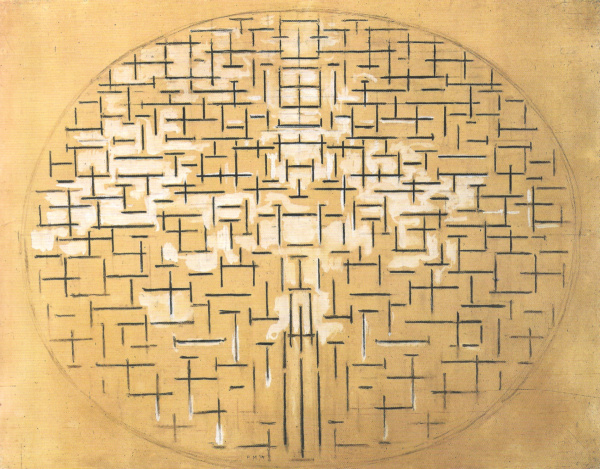Ocean 5
The celebrated Dutch Painter, Piet Mondrian, is well known for his works such as The Gray Tree (1912); the Pier and Ocean (1915); Composition with Colour Planes (1917); Composition with Large Red Plane, Yellow, Black, Gray and Blue (1921).
Other works include Tableau I: Lozenge with Four Lines and Gray (1926) and Broadway Boogie-Woogie (1942-43). To understand how Mondrian’s work was shaped by his sojourns and life experiences the Ocean 5 is one illustrious example.
The Ocean 5 is basically an abstracted pier that is composed of vertical lines that touch the base of the oval, which stretches into the ocean and short crosses that give the impression of light flickering on the water surface.
Mondrian used Cubism to forge his approach to abstraction, which he developed during his two-year stay in Paris, lasting from 1912 up to 1914. He was influenced by the approaches by Georges Braque and Pablo Picasso who had integrated Cubism in their artistic works. Cubism resolves around the artistic problems of compositional interference of the corners; it also unifies the particular elements of the whole picture.
Mondrian regarded the vertical and horizontal lines as the basic oppositional principles, which could effectively interact to yield a union that symbolises the state of universal harmony. He claimed that the Cubism approach helped him to approach the truth with far reaching closeness and therefore be able to abstract everything until he arrived at the fundamental quality of the objects of his interest.
In Ocean 5, Mondrian’s source is evidently found in the natural world, specifically in the ocean wave motions as they come into contact with the breakwater. He, however, succeeded to reduce the signs of this source into the most basic pictorial form. He determined his stroke by their structural function instead of their descriptive potential.
Ocean 5 painting exemplifies Piet Mondrian integration of fellow artists’ approaches in rendering realism to the works of art that can otherwise be dismissed as abstract. This is a manifestation of the evolution of his style, which kept appreciating the new cities that he found himself living in such as New York, much later.




